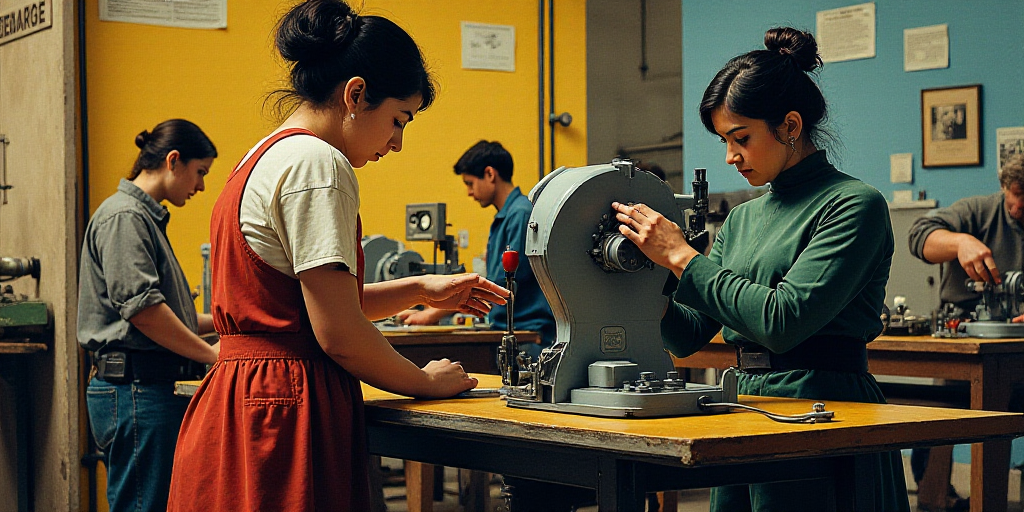The Gendered Division of Labor in Mexico
In Mexico, the triple workload of working, caring for others, and managing household chores remains predominantly a female responsibility. According to the National Household Income and Expenditure Survey (ENIGH) 2024 by the National Institute of Statistics and Geography (Inegi), women dedicate 12% more time per week to these tasks compared to men.
Time Distribution Among Genders
- Approximately 13.2 million women spend 76.1 hours weekly on this triple workload.
- Around 9.1 million men also engage in these tasks, dedicating 67.6 hours per week, which is 8.5 hours less than women.
- In comparison to 2022, both men and women spent more time on these tasks. In 2022, men dedicated 68 hours, while women spent 76.8 hours.
The disparity is most noticeable in caregiving tasks. In 2024, women who only cared for a family member spent 31.4 hours weekly, while men dedicated 18.9 hours.
Caregiving Needs in Mexico
The ENIGH 2024 analysis revealed that 18.5 million people in Mexico required care the previous year, a 0.8% decrease from 2022.
- First-instance individuals (9 million) were the primary group needing care.
- People with disabilities (5.6 million) and dependent older adults (3.9 million) followed.
Despite this, the public budget for care-related programs in 2025 is only 45,800 million pesos, equivalent to 0.1% of the GDP, reflecting limited allocation to this area.
Historical Context and Future Challenges
Traditionally, caregiving responsibilities have fallen on women, impacting their professional, economic, social, and intellectual development. With an aging population and caregiving tasks remaining largely unpaid, a care crisis has been anticipated.
A study by the Women in Leadership Research Center, in collaboration with Afore SURA, highlights the complexity of securing financial stability during old age for women who contribute less to the formal labor market and predominantly handle unpaid domestic and care tasks.
The research predicts an increase in the older population, with 15% estimated to be seniors by 2030, rising to 19% by 2040, and reaching 24% by 2050.
The Pending National Care System in Mexico
Mexico has yet to establish a comprehensive National Care System. According to President Claudia Sheinbaum, progress on this system is expected during the current administration, focusing primarily on childcare.
“We have decided to mainly focus on what were once called nurseries or care spaces for girls and boys, now known as Centros de Educación y Cuidado Infantil (CECI). We aim to build at least 1,000 centers so that young working women can leave their children and, if they wish, join the labor force,” she stated recently.
In addition to this system, programs like the Pension for Elderly and Persons with Disabilities, as well as educational scholarships, are part of the National Care System.
“While transfers are a component, the rest of the pillars revolve around cultural change, training, infrastructure, and public services… The key is that these are not just transfers but adapting existing infrastructure, building new ones, and orienting services… We must move away from the notion that women are the backbone of social security,” said Carlos Brown, coordinator of Programs at Oxfam Mexico.
Key Questions and Answers
- Q: How many hours do women in Mexico spend on care, work, and household chores weekly? A: Approximately 76.1 hours.
- Q: How many hours do men spend on these tasks weekly? A: Around 67.6 hours, which is 8.5 hours less than women.
- Q: How many people in Mexico required care in 2024? A: About 18.5 million people.
- Q: What is the public budget allocated for care-related programs in 2025? A: 45,800 million pesos, equivalent to 0.1% of the GDP.
- Q: What challenges does Mexico face regarding caregiving responsibilities? A: The lack of a comprehensive National Care System and the gendered division of labor, which disproportionately affects women’s professional development.






